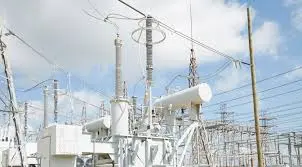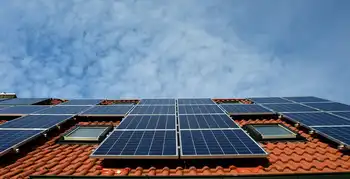Experts To Assess Failed Power-Outage Safeguards
WASHINGTON, DC -- - Government regulators and electricity experts scrambled Thursday to understand why the blackouts that darkened much of the eastern United States and Canada Thursday were so widespread.
Mechanisms put in place after the massive Northeast blackout of 1965 were supposed to isolate any power outage, in a procedure known as "islanding."
But Thursday's power outage cascaded through New York, parts of New England, Michigan and northern Ohio within seconds.
"It's apparent that the defensive mechanisms did not work in this case," said Charles Curtis, a former undersecretary of Energy.
By late Thursday, officials were still trying to figure out exactly where the troubles began.
New York Mayor Michael Bloomberg pointed to an outage in Quebec, which then pulled electricity from the United States to make up for the loss. The Canadian government blamed a lightning strike in Niagara, N.Y., only to later retract that information. And Pat Wood III, chairman of the Federal Energy Regulatory Commission in Washington, pointed to transmission lines in Ohio, which may have been an exacerbating factor.
"Everybody's hoping it was in somebody else's backyard," said one industry expert, who asked not to be named. "Nobody's going to want to hold this bag."
Power plants throughout the eastern United States are interconnected through a giant grid system known as the Eastern Interconnect.
Texas' power grid is not tied to the Eastern Interconnect. About 85 percent of the Lone Star State is served by a self-contained grid that relies on electricity generated in Texas.
Becky Klein, chairman of the Public Utility Commission of Texas, said Thursday afternoon that everything in the state was operating normally.
"The electric grid is operating normally today and not affected by the blackouts in the Northeastern U.S.," Klein said. "We are actively monitoring the situation."
The Electricity Reliability Council of Texas, or ERCOT, said the state's reserve margin for electricity exceeds 30 percent.
Even when temperatures in Texas hit triple digits last week, triggering record power usage last Thursday and Friday, considerable capacity remained.
While ERCOT serves most of the state, areas in northeast Texas around Texarkana and in parts of the Panhandle are served by different power grids.
There were no reports of significant disruptions in major metropolitan areas of Texas on Thursday. Dallas-based TXU Energy, which serves 2.7 million customers in Texas, reported no problems Thursday.
The same was true for Houston-based CenterPoint Energy. The company said its infrastructure is only interconnected with other utilities within the state.
Thursday's blackouts in the east came as temperatures were heating up after weeks of unusually cool and rainy summer weather.
The power outage knocked out 10 nuclear power stations, including the huge Perry Nuclear plant in northern Ohio. That's because nuclear power stations automatically shut down when they experience fluctuations in electricity frequency.
Nuclear plants generate a tremendous amount of electricity, making it difficult for other generators to make up the difference when they go offline. Those workarounds were even more difficult to pull off Thursday because of the major transmission lines that were out of service.
When a portion of a power system experiences a failure like that seen in the East Thursday, electricity naturally flows to that point to fill the vacuum. Curtis compares the effect to a "tremendous sinkhole."
The grid has protective systems which are tripped when frequencies or voltages go outside normal ranges. The islanding mechanisms are supposed to protect the network surrounding an outage site, to ensure that electricity is not drained off.
The FERC's Wood said the blackouts point to a bigger problem: a lack of investment in electricity infrastructure in areas like the Great Lakes.
Regulators have long raised concerns about the nation's reluctance to build new transmission lines. Increasingly plugged-in communities may demand more power, but residents howl when they learn power lines may be marching through their neighborhoods.
"The system has grown more and more brittle over time," Curtis said. "We know how to fix it. We're just not fixing it."
Former Energy Secretary Bill Richardson, in an appearance on CNN Thursday, said the country is paying the price for allowing its power grid to deteriorate to that reminiscent of a Third World nation.
"We ought to just get ready for these things," he said.
Related News

Negative Electricity Prices Amid Renewable Energy Surplus
FRANCE - In a remarkable feat for renewable energy, France has recently experienced negative electricity prices due to an abundant supply of solar and wind power. This development highlights the country's progress towards sustainable energy solutions and underscores the potential of renewables to reshape global energy markets.
The Surge in Renewable Energy Supply
France's electricity grid benefited from a surplus of renewable energy generated by solar panels and wind turbines. During periods of peak production, such as sunny and windy days, the supply of electricity exceeded demand, leading to negative prices. This phenomenon incentivizes consumers to use electricity during surplus…




